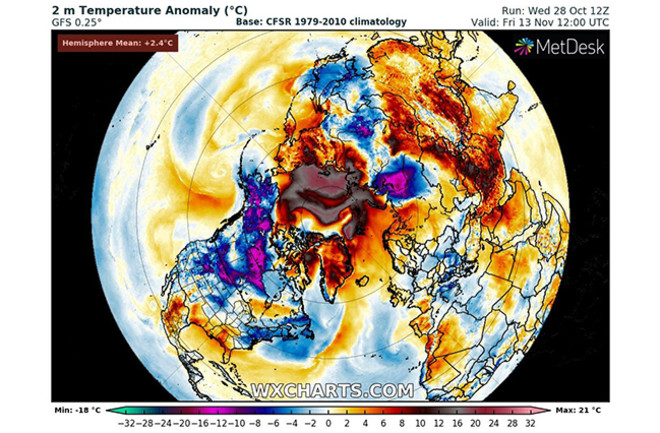
Temperatures in large parts of the Arctic are expected to remain warmer than normal, as seen in this graphic showing a model prediction for Nov. 13. (See below for an animation of the day-by-day forecast between now and then.) Temperatures are expected to remain high for a while because wide swaths of open water are releasing huge amounts of heat into the atmosphere. (Credit: WXCHARTS.COM)
In September, Arctic sea ice reached its second lowest extent on record.
Now, in one significant way, the situation has only gotten worse.
With the onset of winter, large swaths of Arctic waters that should be frozen over by now remain ice-free. As a result, the extent of the ice is currently running at record lows for this time of year.


